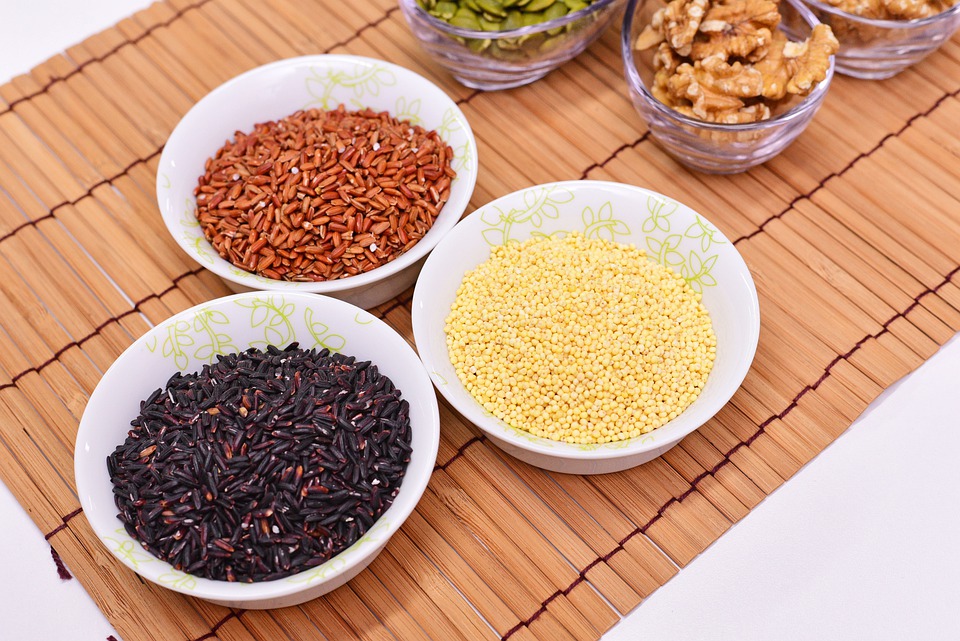Millets are gluten-free crops that have been used in India for ages. They can play an important role in preventing and curing various health issues. Millets have significant nutrient-rich composition.
Millets are a large source of fiber, minerals such as magnesium, phosphorous, iron, calcium, zinc, and potassium. They are healthy but at the same time, they have taste.
Types of Millets & there uses :
Jowar Millet(Sorghum)
Sorghum is commonly known as Jowar . Traditionally it was used as a grain to make flatbreads/ Rotis, porriage, thepla, cookies, poori, dosa, sheera & thalipeeth.
Jowar consists of nutrients such as iron, protein, and fiber. It can help in reducing cholesterol levels as it has a component called policosanols (part of sorghum wax). It’s beneficial for people who have a condition known as Celiac disease (wheat intolerance).
Ragi Millet(Finger)
Ragi is popularly known as Finger millet or Nachini. The grain actually originated in Africa and has been cultivated in Uganda and Ethiopia for many years. Finger Millet is a healthy substitute for rice and wheat. Ragi millet is a powerhouse of nutrition.
Contains nutrients like protein and amino acids and this gluten-free millet is good for brain development in growing kids. Used to make items such as chapati, poori, Ragi Idli, khichadi, apple ragi Halwa, cookies, cakes, roasted namkeens, etc.

Bajra Millet(Pearl)
Bajra is a popular grain in North-West India, including the states Rajasthan and Haryana. Pearl millet has its health benefits. It helps in controlling cholesterol levels and diabetics.
It is the richness of iron, protein, fiber, and minerals such as calcium and magnesium. The daily consumption or inclusion of this millet can deliver great benefits. Used to make dishes – chapati, khichdi, cheela/dosa, cakes, thepla, and wraps.
Barnyard Millet (Sanwa) – It’s locally known as Sanwa, this millet is a gluten-free source of both insoluble and soluble fibers. Barnyard millet can be used to make, porridge, Khichdi, and even Pulao!.
learn How to make Ragi dosa?
This millet is nutrient-dense and has a high fiber content, which can effectively help in weight loss. It’s a rich source of calcium and phosphorous and helps in bone-building too. Its daily consumption helps fight bone diseases.
Proso millet (While millet)- This millet is a unique Indian Millet and is commonly known as white millet, Kashif millet, or hog millet. This millet is now cultivated in India, the Middle East, Turkey, Russia, and the United States.
It is gluten-free and has nutrients such as carbohydrates, protein, niacin (Vitamin B3), and fatty acids. It is used to make dishes like upma, dosa, idli, khichdi, and pulao.
Little millet (Samai) – The Little Millet (also known as samai) is believed to have originated in India. It is grown and used for food almost exclusively in our country.
Samai consists of nutrients such as B-vitamins, minerals like calcium, iron, zinc, and potassium and little millets can provide important nutrients which further help in weight loss.
It is used in many traditional dishes in south India. Little millet has high fiber content in it. Sometimes it can be a healthy replacement for rice. it i Used to prepare items such as poori, paratha, kheer, upma & porriage.
Kodo Millet(Kodu) –
This is thought to be originated in Africa and was introduced to India. But now grown primarily here. Kodo millet is popular by the local names in India like Arikelu in Telugu, Varagu in Tamil, and Kodra in Hindi.
It is very easy to digest and consists of a high amount of lecithin and is excellent for strengthening the nervous system.
Kodo millets are rich in nutrients such as B vitamins, especially niacin, B6, and folic acid, as well as the minerals such as calcium, iron, potassium, magnesium, and zinc. Kodo millets are gluten-free and are good for people who are gluten intolerant.
Consumption is very beneficial for postmenopausal women suffering from signs of cardiovascular diseases, such as high blood pressure and high cholesterol levels. Used to make various dishes – idli, dosa, pulao, kheer, upma, khichdi, etc.
If you are struggling shedding weight. You can talk to us by taking this assessment: Click here
For more information click here

